This Blog Post…
This blog post took more than 8 hours to prepare. Each blog post is presented for your enjoyment, to teach you a few new things about nature photography, and hopefully, to inspire you. Please consider doing all of your holiday shopping by starting with our Amazon affiliate link immediately below or with one of our B&H affiliate links at the end of this blog post. Your purchases will not cost you a penny more and using our links is a great way to thank me for my work here and my work on the BIRDS AS ART Bulletins. :).
Thanks for considering this request. No purchase is too small to be appreciated!
|
This image was created on November 25, 2013, our snow day at Bosque with the hand held Canon EF 70-200mm f/2.8L IS II USM lens, the Canon 1.4x EF Extender III (Teleconverter) (at 280mm), and the Canon EOS 5D Mark III Digital camera body ISO 100. Evaluative metering +2 1/3 stops off the white sky: 1/13 sec. at f/18 in Manual mode, with the Hoya 77mm Neutral Density (ND) 0.9 (3-stop) Pro 1 Digital Multi-Coated Glass Filter Central sensor/AI Servo Rear Focus/Suround AF as framed active at the moment of exposure. Click here if you missed the latest version of the Rear Focus Tutorial. Be sure to click on the image to enjoy a larger version. |
Beyond Spectacular Part II
If you missed Beyond Spectacular Part I, click here. What can I say? 2028 images created. 480 first edit keepers. Denise Ippolito and I stayed at the refuge from 6am till 5:30 pm. With this actually being my twentieth straight year here at the Thanksgiving season, November 24, 2013 was my best day ever at Bosque.
|
Here’s another one from our great day in the snow. This Snow Goose in flight image was created with the Gitzo 3532 LS carbon fiber tripod, the Mongoose M3.6 head, the Canon EF 600mm f/4L IS II USM lens, the Canon 1.4x EF Extender III (Teleconverter), and the Canon EOS-1D X. ISO 400. Evaluative metering +2 1/3 stops off the white sky: 1/2000 sec. at f/6.3 in Manual mode. Color temperature: 7000K. Central sensor/AI Servo/Surround Rear Focus AF active at the moment of exposure. Click here to see the latest version of the Rear Focus Tutorial. Click on the image to see a larger version. |
600II/1.4X III/1D X for Flight
The 600mm f/4L IS II lens, the 1.4X III telecovnerter, and the EOS 1D X are an incredible combo for tripod-mounted flight photography. Others stronger and younger than I use the same combo effectively for hand held flight photography. In either case, the snow reflected light up onto the undersides of the geese and cranes giving the birds a pleasing snow glow. Note that it is important to add lots of light in these conditions to produce a proper exposure with data into the right-most histogram box.
|
This 3-frame Art Vivid HDR image was created with the Gitzo 3532 LS carbon fiber tripod, the Mongoose M3.6 head, the Canon EF 200-400mm f/4L IS USM Lens with Internal 1.4x Extender (at 282mm) and the Canon EOS 5D Mark III. ISO 500. Evaluative metering +1 2/3 stops as framed yielded a base exposure of 1/200 sec. at f/7.1. Central sensor/AI Servo/Surround–Rear Focus AF as framed active at the moment of exposure. Click here to see the latest version of the Rear Focus Tutorial. Click on the image to see a larger version. |
Mountains, Mountains, Mountains
The background mountains are an important compositional element in each of the first two images presented here. In the image directly above they are the subject. The dusting of snow makes the image that much more attractive. My understanding is that Chupadera Peak is the largest peak in the range to the west of the refuge but that the other peaks are not formally part of a Chupadera range. Therefore the low mountains seen in the image above are not really the Chupaderas though pretty much everyone refers to them in that way.
|
This birds in a snowy cornfield image was also created at Bosque del Apache NWR on the very early morning of November 22, 2013 with the Gitzo 3532 LS carbon fiber tripod, the Mongoose M3.6 head, the Canon EF 200-400mm f/4L IS USM Lens with Internal 1.4x Extender (with the internal TC in place at 315mm) and the Canon EOS-1D X. ISO 400. Evaluative metering +2 stops as framed in Av Mode: 1/60 sec. at f/18. Color temperature 8000K. Central sensor/AI Servo/Surround–Rear Focus AF on the row of resting Snow Geese and re-compose. Click here to see the latest version of the Rear Focus Tutorial. Click on the image to see a larger version. |
Snow at Bosque
The combination of snow, geese, cranes, and a cornfield is a powerful one for most folks, and irresistible one for me. Here I went to a small aperture with lots of depth-of-field. In my 20 years of visiting Bosque I have enjoyed a decent snowfall only twice. Snow has been even rarer for me than fire in the mist conditions; I have encountered that 3 or 4 times over my two decades of refuge visits. Be sure to enjoy it when you can!
|
This image was created with the hand held Canon 15mm f/2.8L fisheye lens (now replaced by the Canon EF 8-15mm f/4L Fisheye USM Ultra-Wide zoom lens and the Canon EOS-1D X. ISO 400. Evaluative metering -1/3 stop: 1/2500 sec. at f/7.1. Color temperature78000K. Central sensor/AI Servo/Surround–Rear Focus AF as framed active at the moment of exposure. Click here to see the latest version of the Rear Focus Tutorial. Click on the image to see a larger version. Click here to search for fish eye lenses and accessories for the Nikon system. Consider also the Sigma 15mm f/2.8 EX DG Diagonal Fisheye Autofocus lens for Canon EOS |
Fish-Eye
At times you will find yourself at Bosque with hundreds if not thousands of geese directly overhead. Though south winds increase your odds, the situation may occur on any wind. Pointing a fish eye lens straight up is the way to go when it happens. For this image I could not point the lens directly up so I made sure to level the image in the viewfinder as best as I could by using the bottom line of the 4X6 viewfinder grid….
|
This image was also created on November 25, 2013, our snow day at Bosque with the hand held Canon EF 70-200mm f/2.8L IS II USM lens (at 155mm) and the Canon EOS-1D X. ISO 50. Evaluative metering +2 stops off the white sky: 1/13 sec. at f/11 in Manual mode, with the Hoya 77mm Neutral Density (ND) 0.9 (3-stop) Pro 1 Digital Multi-Coated Glass Filter Central sensor/AI Servo Rear Focus/Suround AF as framed active at the moment of exposure. Click here if you missed the latest version of the Rear Focus Tutorial. Be sure to click on the image to enjoy a larger version. |
Using All the Clubs in your Bag
To create the images in today’s blog post, all made on the very same day, I used the 600mm f/4L IS II, the 200-400 with Internal TC, the 70-200 f/2.8L IS II, and the old 15mm fish eye lens. In the first snow day post, Beyond Spectacular Part I, I featured an image created with the 24-105mm zoom lens.
So on a given day over the course of 11 1/2 hours I used every lens that I had at my disposal. How do you decide which lens to use? You see the snow. You see the birds either on the ground or in the air. You take note of the light and of what the birds are doing. You try to figure out what will happen next. You decide what you want to show in your image and then choose the tool that will best enable you to fulfill your photographic vision. Then you push the button at just the right time. With experience, your choices will become second nature.
Your Favorite?
Which of the six images is your favorite? Before you choose, be sure to click on each image to view and appreciate a larger version. Please let us know why.
Last Year’s Grand Prize winning image by Lou Coetzer
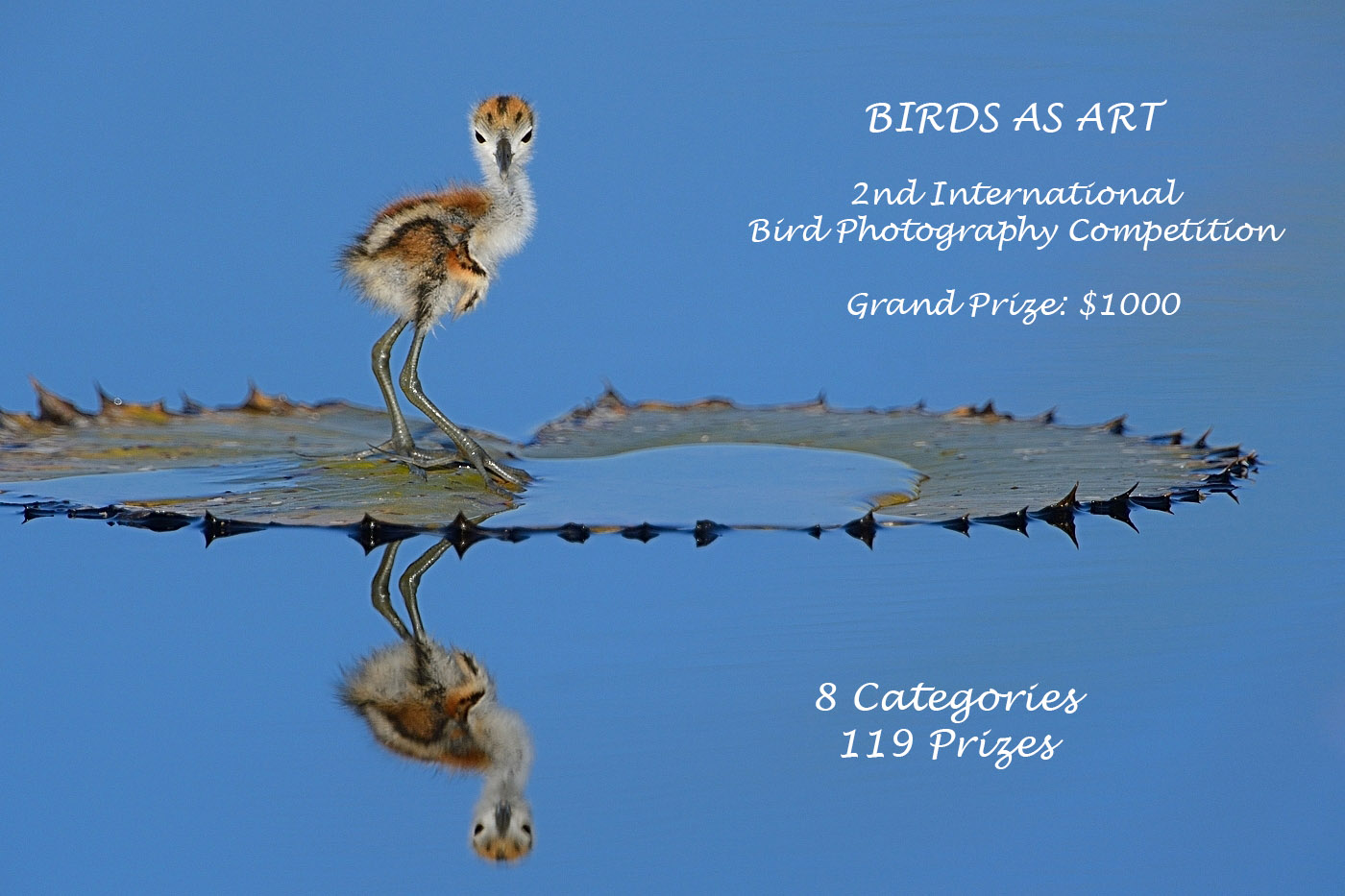
|
BIRDS AS ART 2nd International Bird Photography Competition
The December 21, 2013 closing deadline is fast approaching.
Learn more and enter the BIRDS AS ART 2nd International Bird Photography Competition here. Twenty-five great prizes including the $1000 Grand Prize and intense competition. Bring your best.
Support the BAA Blog. Support the BAA Bulletins: Shop B&H here!
We want and need to keep providing you with the latest free information, photography and Photoshop lessons, and all manner of related information. Show your appreciation by making your purchases immediately after clicking on any of our B&H or Amazon Affiliate links in this blog post. Remember, B&H ain’t just photography!




Amazon
Everyone buys something from Amazon, be it a big lens or deodorant. Support the blog by starting your search by clicking on the logo-link below. No purchase is too small to be appreciated; they all add up. Why make it a habit? Because I make it a habit of bringing you new images and information on an almost daily basis.
Typos
In all blog posts and Bulletins feel free to e-mail or leave a comment regarding any typos, wrong words, misspellings, omissions, or grammatical errors. Just be right. 🙂
IPT Info
Many of our great trips are filling up. You will learn more about how to make great images on a BAA IPT than anywhere else on the planet. Click here for the schedule and additional info.

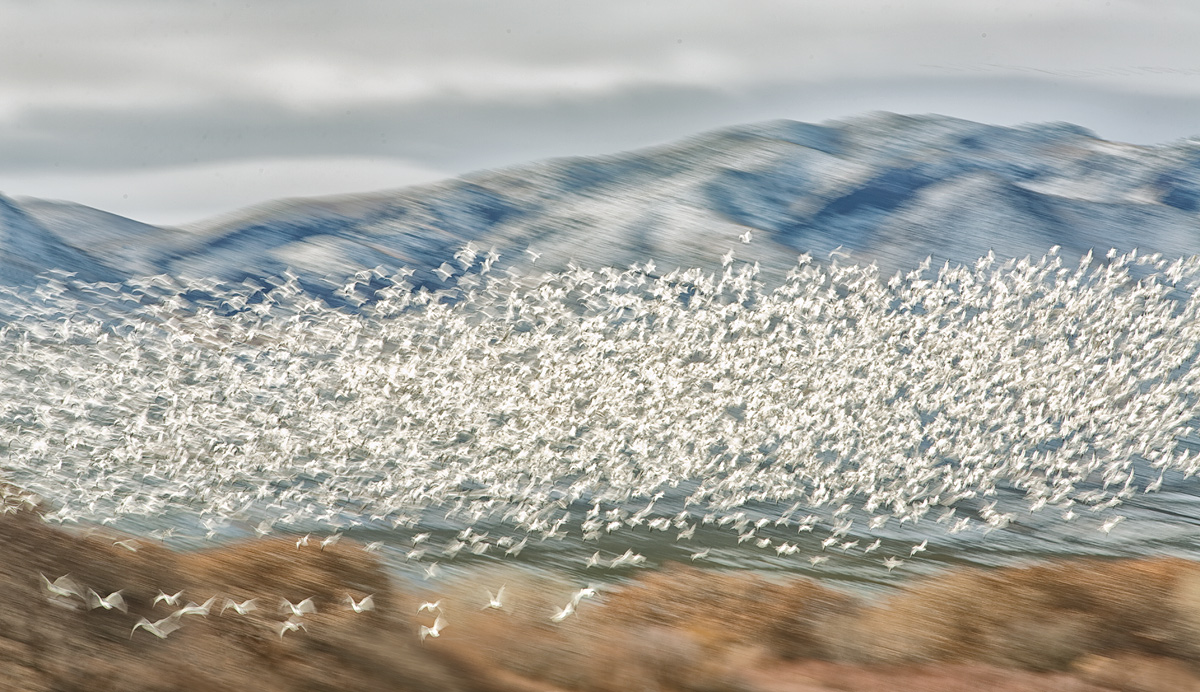
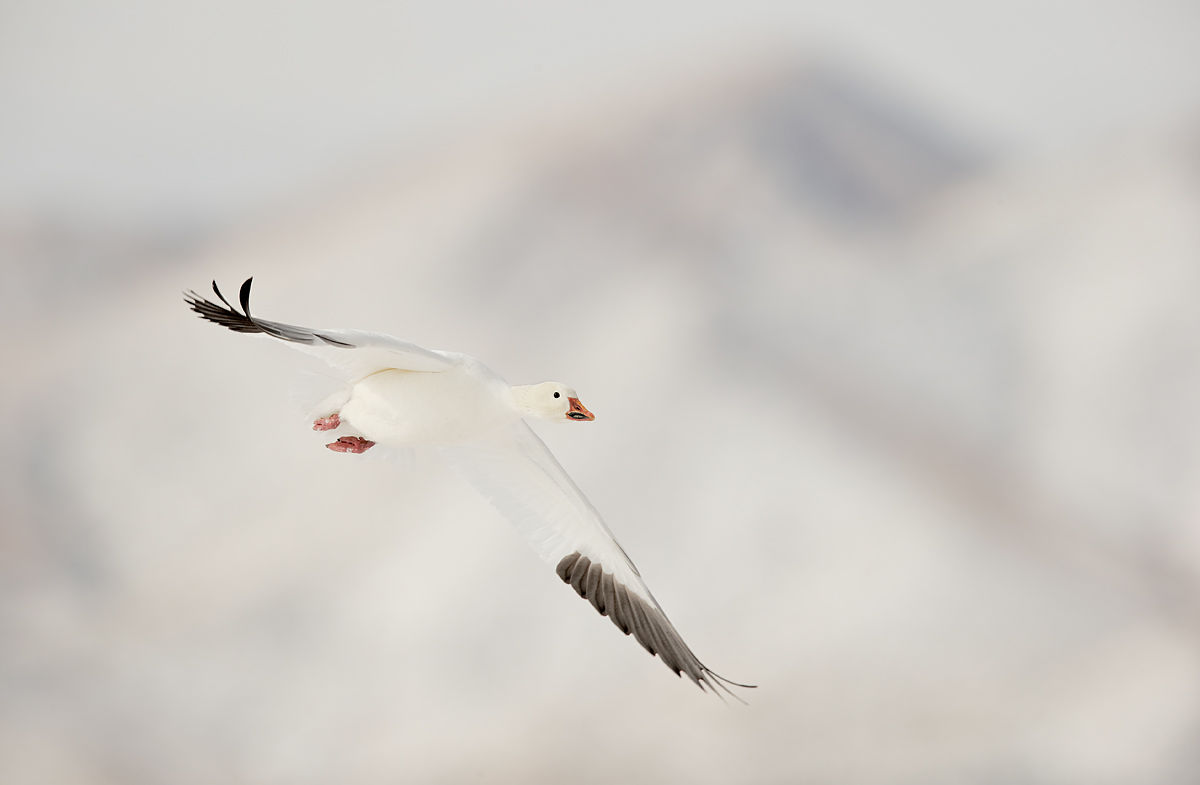
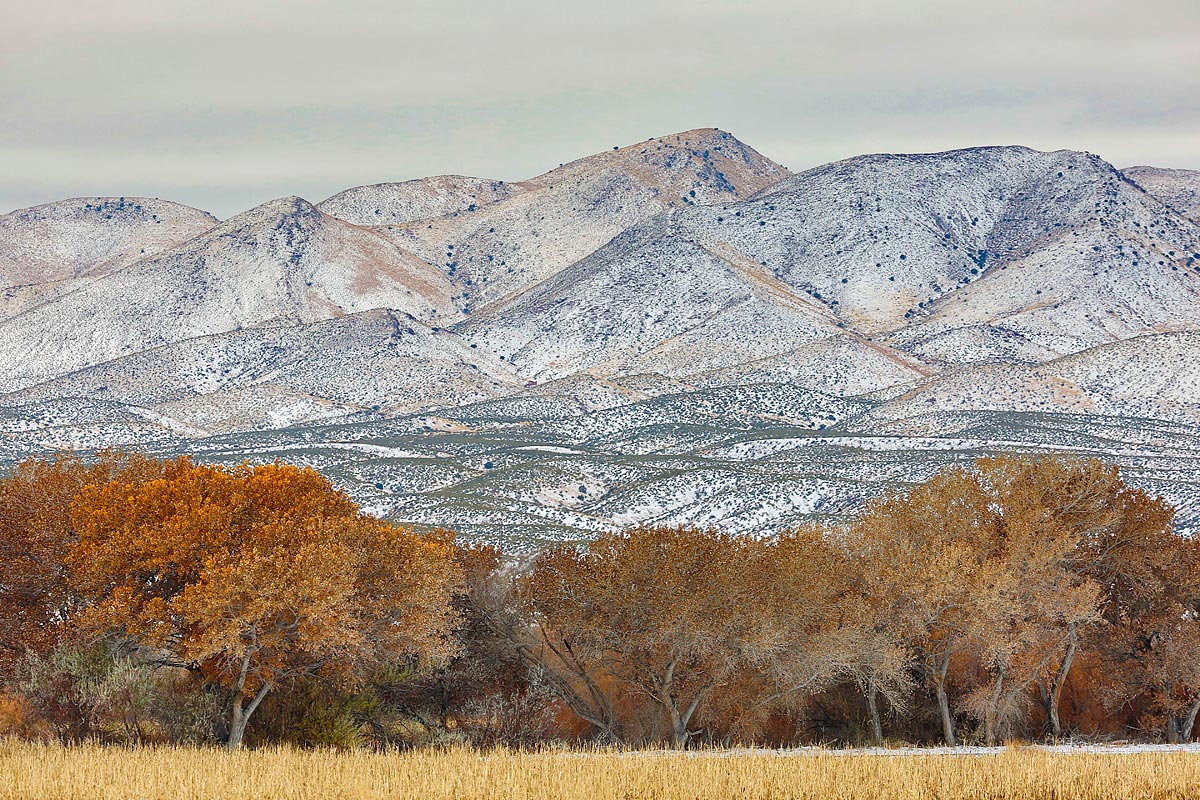
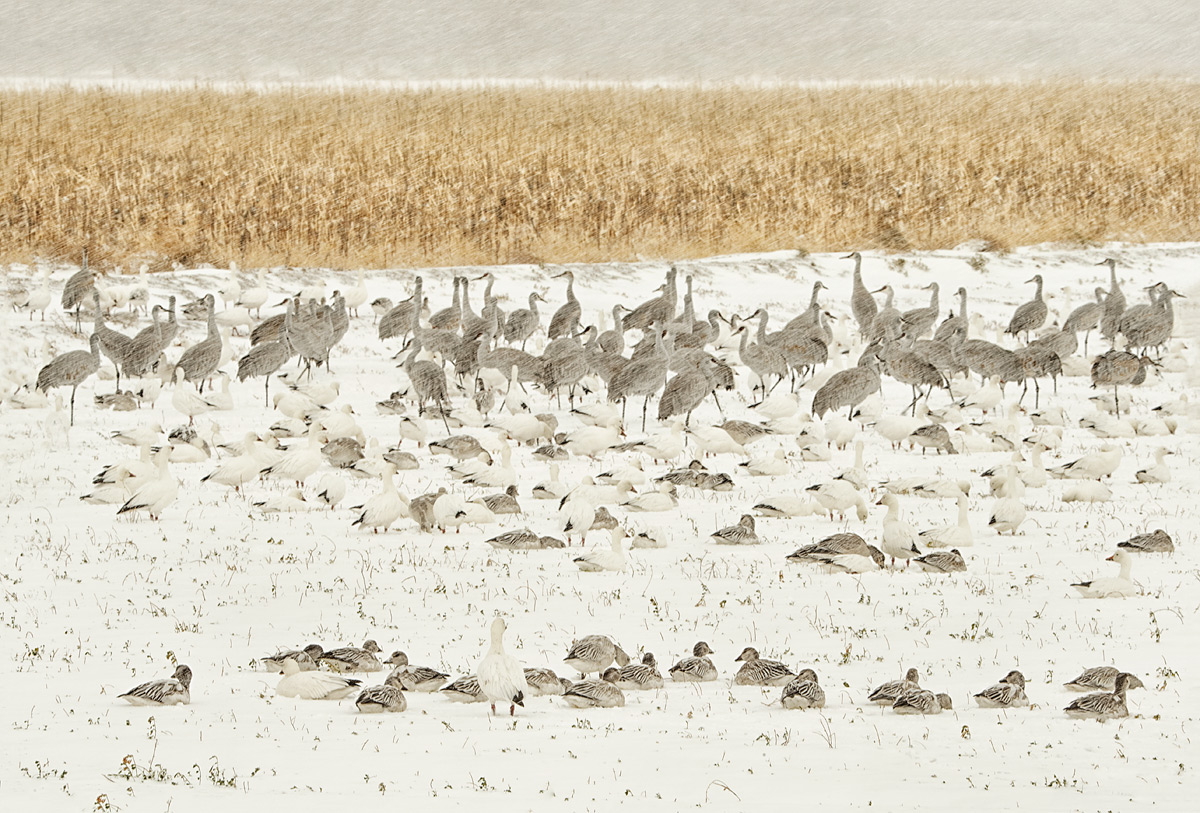
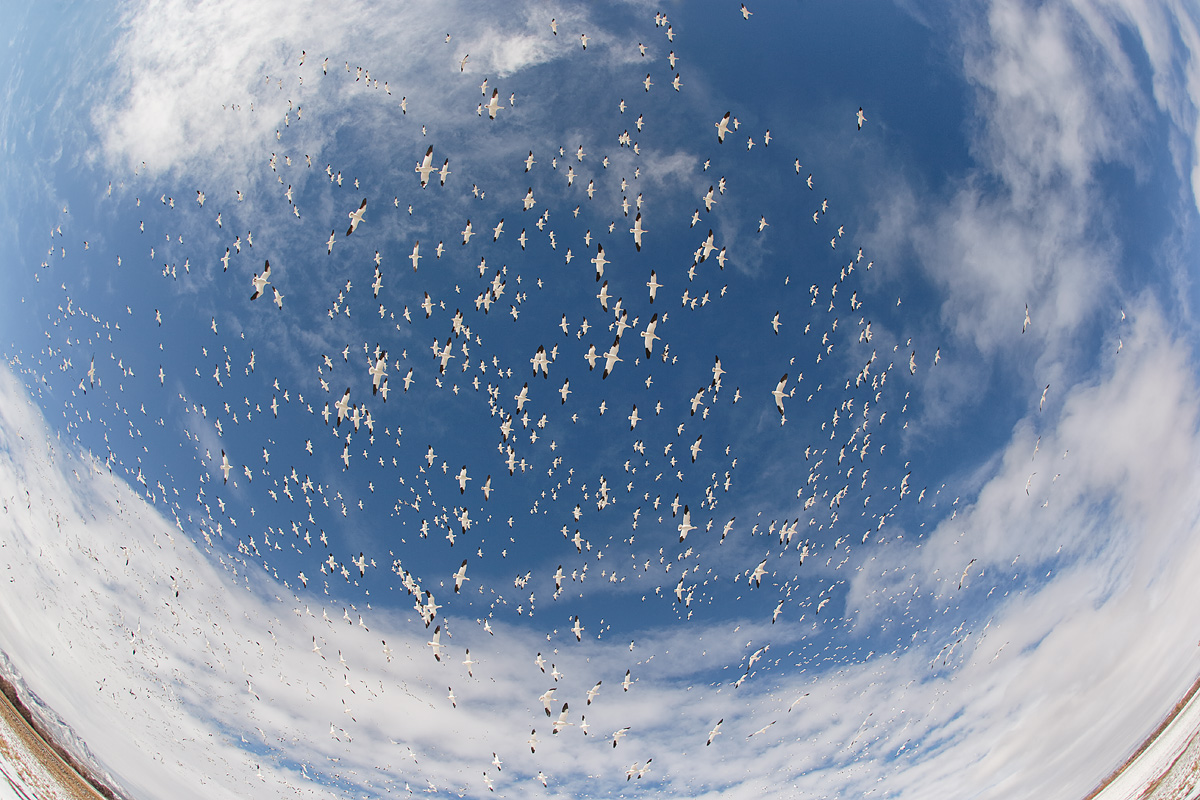
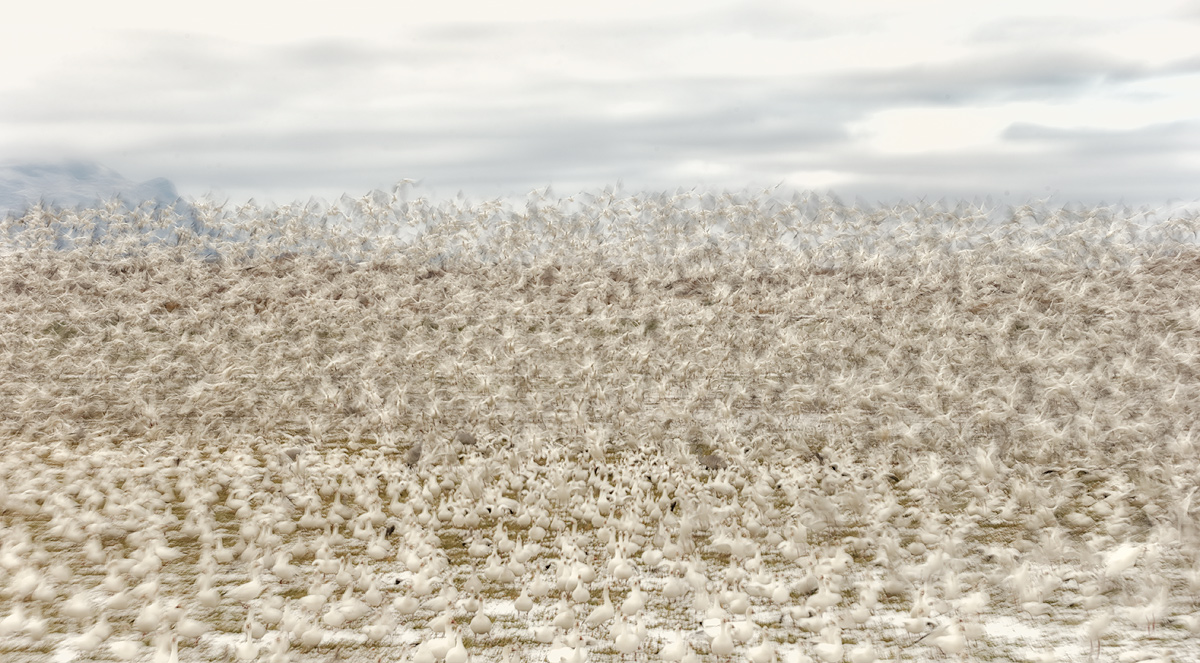













4th image for me every time, as not a fan of fish eye or blurs, though some of yours I like, but not this one… sorry!
I like the first photo , a beautiful blur. Question, was there any intentional camera motion, i.e. panning with the flock?
Thanks. I was panning slowly with the flock as the flew from my right to left. I tried to match their speed in the air with my panning. If I had been holding the camera still, the mountains would have been rendered relatively sharp, much sharper then they are in the image.
As usual all of your shots are great with number 1 being my favorite. I love the painterly feel to it, the mass of birds and the group near the bottom. I can’t figure out if they are leaving the group or joining it but for me this is a very pleasing blur. 🙂
Thanks Tom. They are traveling sideways, right to left, north to south.
As usual, hard to pick a favorite….as one other said, I am usually not a fan of fisheye lenses, but this one is bloody cool!!!!
That fisheye shot was cool. Sometimes I don’t like fisheye shots, but this was a very neat use of it.
Love the fisheye image!!!!
Hi Artie,
For you, this blog post should be more aptly titled,”Using All of the Clubs in Your Trunk.” 🙂 These are all awesome images, like your other recent posts, but I like the first image the best: a pleasing level of blurring to the geese with clean bottom and top borders and wonderful textures to the cottonwoods and the Chupaderas. The 3-stop ND filter made all the difference with that capture. Another stellar winner among so many from your two weeks at Bosque. I imagine this to be one of your best trips ever as you had so many divergent opportunities within a few short days of one another. Thanks to you and Denise again for your instruction and company at Bosque this year. This location has a way of roping you in and making you want to return many times over. As a workshop attendee your knowledge and experience make all the difference.
Best regards,
Dave
Thank you Mr. Dave 🙂